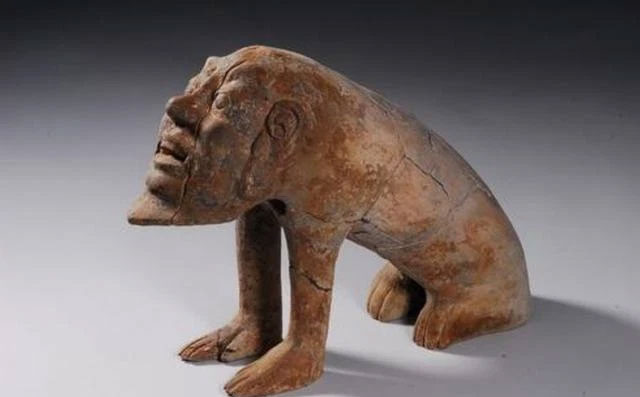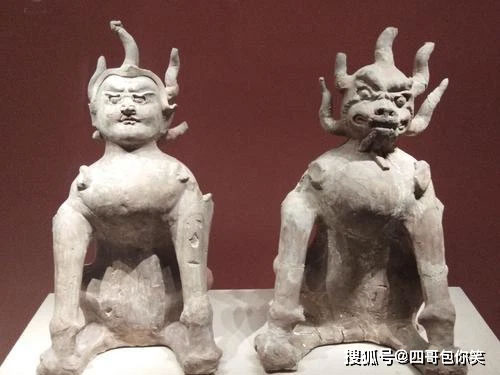Is This the “Relative” of the Sphinx Guarding the Pyramids of Egypt?
The Sphinx is a quintessential representation of ancient Egyptian stone carving art. While it was believed to be a unique treasure of Egypt, a “second version” has been discovered in China. What is the truth behind this story?
The Sphinx is a world-famous monument located in the Giza Pyramid, Egypt. It stands 20 meters tall and stretches 72 meters long, including its two front paws. In ancient Egypt, lions were embodiments of the god of war, symbolizing strength and the pharaoh.

This statue resembles the Sphinx of Egypt.
Not only found in Egypt, the Sphinx has surprisingly appeared in China. The discovery of the “tomb beast” in Xi’an has shaken the scientific community.
When archaeologists excavated an ancient tomb from the Tang Dynasty in Chang’an District, Xi’an, China, they identified that the tomb belonged to a man named Wang Shitong, who was an official in the court at that time.
Within the tomb, experts uncovered a significant number of cultural artifacts, such as terracotta warrior statues, bronze artifacts, and coins. Notably, in the right arm bone of the skeleton, there was a “mini stone pig” (a pig made of stone).
This is actually a characteristic feature of ancient burial customs. Pigs symbolize wealth and prosperity. Therefore, individuals of high status often preferred to be buried with a pig beside them.
Furthermore, a “beast” with a human face and an animal body, painted in vibrant colors, was found at the entrance. It stands only 20 cm tall and over 10 cm wide, resembling a male lion, but its head and face look human with benevolent eyebrows. Overall, this statue bears a resemblance to the Sphinx of Egypt.
Explaining this bizarre creature, experts noted that in ancient customs, they served as a type of “spiritual weapon.”

Other recorded beast statues. (Image: Sohu)
Ancient people believed that after death, various types of spirits would emerge. Demons from the underworld would harm the souls of the deceased. Therefore, to ensure the deceased could rest in peace, relatives would place these beasts to suppress the tomb to ward off evil and protect the soul of the departed.
The prototype of these beasts is “Fangxiangshi.” According to legend, this creature has four golden legs, a black bear skin, wears red clothing and black pants, and is tasked with guarding the tomb.
In subsequent excavations of ancient tombs, beasts from the Chu tombs of the Warring States period were also unearthed. However, their forms were more abstract and bizarre. In later periods, most of the spiritual beasts used for suppression had one or two heads, and their shapes were considered quite horrifying.
Returning to the beast found in Wang Shitong’s tomb. Traditionally, the creatures in tombs are carved with fearsome expressions. However, the guardian figure in his tomb has a very kind and gentle face. Scholars suggest that this is “the Sphinx in China.”
However, the capital Chang’an (now Xi’an) and Egypt are thousands of kilometers apart. How could ancient people have such similarities? This is clearly a question that remains unanswered.
After the statue was excavated, it sparked much discussion among international scholars. The mystery of the origin and the connection between the tomb beast from the Tang Dynasty and the Sphinx of Egypt still requires further research to find the most satisfactory explanation.


















































